In politics, perception is everything. And at the nine-month mark, President Luis Guillermo Solís’ administration is taking a pounding in one of the areas that has long set Costa Rica apart from other nations in the region – environmental protection.
The latest flare-up – and most troubling so far for environmentalists – centers on the administration’s green-lighting of the export to Hong Kong of hammerhead shark fins. Costa Rica fought hard to include three species of hammerheads in Appendix II of the Convention on International Trade in Endangered Species of Wild Fauna and Flora, or CITES, back in March 2013.
Conservationists are questioning the approval of those exports, which they say is a step backwards from previous progress on shark conservation. And it’s not just conservationists. The Solís administration faces widespread criticism for what many see as a fundamental betrayal of the country’s public environmental principles.
Despite assertions from government officials that critics are blowing the incident out of proportion, The Tico Times has obtained documents that raise questions about Costa Rica’s commitment to enforcing CITES.
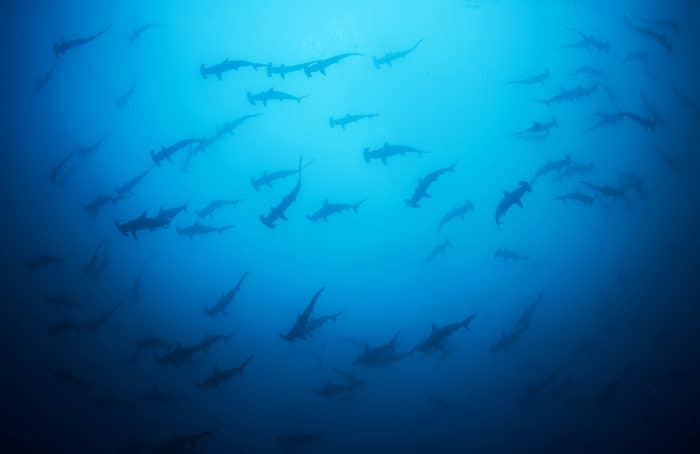
Among the exports are fins from the scalloped hammerhead (Sphyrna lewini), which is listed on the International Union for Conservation of Nature’s (IUCN) Red List of Threatened Species. The IUCN notes that “all life-stages” of the scalloped hammerhead “are vulnerable to capture as both target and bycatch in fisheries: large numbers of juveniles are captured in a variety of fishing gears in near shore coastal waters, and adults are taken in gillnets and longlines along the shelf and offshore in oceanic waters.”
One of those offshore areas is Costa Rica’s Cocos Island National Park, a protected marine sanctuary located 590 kilometers off the Pacific coast of Puntarenas, and its perimeter, part of a marine biological corridor that links up with the Galapagos Islands in Ecuador. Cocos Island has long been considered a shark sanctuary, but biologists have noted a troubling decline in shark species in the park during the last decade.
While no exact data exist on population decline of the Sphyrna lewini in the Eastern Pacific, the IUCN stated that, “Of particular concern is increasing fishing pressure at adult aggregating sites such as Cocos Island (Costa Rica) and the Galapagos Islands (Ecuador).”
That’s why Costa Rica, along with Honduras and Brazil, pushed countries like China and Japan in 2013 to include the majestic and cartoonish-looking hammerheads in CITES’ Appendix II, which prohibits the export of listed threatened species unless a scientific authority can produce a “non-detrimental finding,” or NDF. An NDF must use data to show the exports won’t adversely affect the species’ populations and move them from the category of threatened to endangered.
Each member country sets its own NDF criteria, but CITES has published guiding principles for the scientific authorities of member countries to use in setting NDF criteria. (Read the guidelines here.)
But Costa Rica hasn’t yet defined its scientific criteria to issue NDFs for Appendix II species. Despite pushing hard for a September 2014 deadline to implement the hammerhead initiative in CITES, in the end, Costa Rica has failed to live up to its agreement.
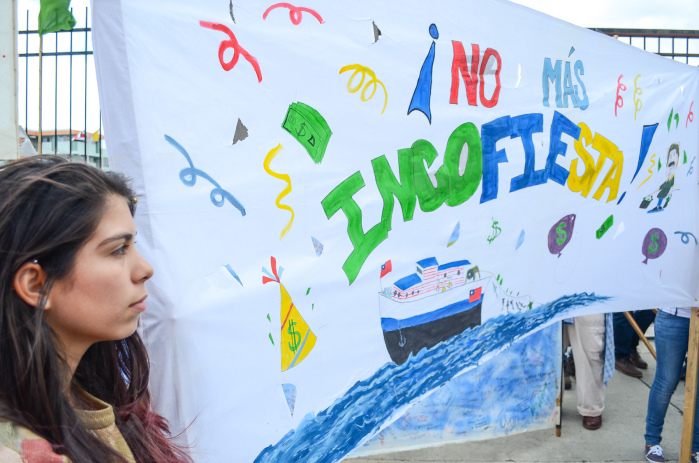
The backstory
During the 2013 conference of CITES member countries, held in Bangkok, the Costa Rica delegation not only worked to include hammerheads in Appendix II but also pushed to set an 18-month deadline for its implementation.
In March 2013, when CITES ratified the inclusion of hammerhead sharks in Appendix II, Costa Rica’s then-vice minister of oceans, coasts and wetlands, José Lino Chaves, told online news site CRHoy.com that, “Costa Rica will ensure the implementation of this measure to the letter of the law in our seas.”
In the end, 91 countries supported the initiative, which went into effect on Sept. 14, 2014.
Two months after that date, in late November, two companies – Hong Kong-based importer Yue Hing Shark’s Fin & Marine Products Co., Ltd., and Costa Rica-based exporter Inversiones Cruz Z, S.A. – requested a CITES-approved permit to export the fins of two hammerhead species, Sphyrna lewini and Sphirna zygaena. In the permit request Inversiones Cruz Z sought to export 411 kilograms of hammerhead shark fins.
Costa Rica’s CITES Council of Scientific Authorities, known by the acronym CRAC-CITES, would normally review and approve or reject such a request. The council is made up of representatives from Costa Rican universities, the Biologists Association, INCOPESCA, the Environment Ministry, conservation groups and others that serve as advisers on CITES-related issues.
On Dec. 12, Antonio Porras, technical director of the Costa Rican Fisheries Institute, or INCOPESCA, wrote a letter to CRAC-CITES claiming the letter served as a “temporary” NDF to allow the export request to be granted.
The letter stated that documents provided by the exporter “show that the amount to be exported is the product of individuals [hammerhead sharks] captured according to current regulations, and at the same time, the quantities solicited to be exported will not jeopardize the species’ survival.”
But there’s no such thing as a “temporary” NDF under CITES.
Plus, conservationists say INCOPESCA, which has a history of promoting the fishing industry at the expense of marine conservation, shouldn’t be allowed to make decisions about exports of threatened species.
Marine conservationists have frequently lambasted INCOPESCA for ineffective regulation and oversight.
For years the regulating body’s board has been dominated by fishing industry lobbyists, and allowing INCOPESCA to make scientific rulings about the conservation of marine species it seeks to commercialize is akin to allowing the fox to guard the hen house, environmentalists say.
Nevertheless, on Dec. 18, 2014 Costa Rica’s CITES scientific council approved INCOPESCA’s temporary NDF proposal to allow the export request to move forward, citing the “moderate” number of sharks involved – 59.
But that number represents another problem, critics say: 411 kilograms of fins totals nearly seven times that number of sharks.
According to a study by Maike Heidemeyer, of the marine conservation group Pretoma, and based on workshops held in conjunction with INCOPESCA, the Environment Ministry and other government agencies, shark fins lose up to 60 percent of their weight from the time they are unloaded fresh to the time they are dried and exported months later.
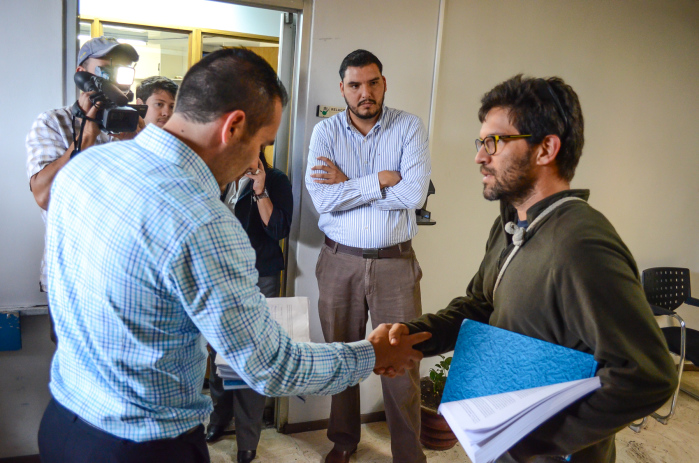
A math problem
On Dec. 19, the National System of Conservation Areas (SINAC) and Costa Rica’s CITES administrators granted an export permit for those 411 kg of fins. On Dec. 22, according to government documents obtained by The Tico Times, the National Animal Health Service signed off on the exportation, which two days later – the day before Christmas – was loaded onto an American Airlines flight bound for Hong Kong.
Last month, when conservationists cried foul over a second export permit for hammerhead shark fins, President Luis Guillermo Solís, SINAC Executive Director Julio Jurado, Oceans, Coasts and Wetlands Vice Minister Fernando Mora and other officials argued that all of the exported fins were the product of incidental bycatch, and all had been landed attached to the sharks’ bodies as required by law.
It was either throw them out or allow them to be exported, Jurado told The Tico Times. As executive director of SINAC, Jurado oversees the implementation of CITES. He is also a board member of The Tico Times.
“All [the second export resolution] did was allow [exporters] to clear out their warehouses. We won’t be issuing any more export permits until the NDF process is completed,” Jurado said, referring to the establishment of scientific criteria for NDFs as required by CITES. That process, he said, could take up to six months.
But according to Randall Arauz, from the conservation group Pretoma, significant progress already had been made on establishing NDF criteria during several workshops last year, a process the biologist said was “about 80 percent complete.”
“Why do we need to wait another six months?” Arauz asked, noting that officials plan on starting the NDF development process from scratch next week.
Arauz said he feared further delays would allow fishermen to continue capturing hammerhead sharks for six more months.
“The [the exporters] are going to dry these [newly captured] fins and stash them. What happens if the NDF says they can’t do it anymore? They’re going to use the same argument that [the fins] are already stored and should be exported.”
No one wants to see a dead animal go to waste. But the extraordinary value of shark fins – highly prized in Asia for making shark fin soup – is an inevitable temptation for fishermen. Conservationists say allowing exceptions to what should be tight restrictions on the shark fin trade, boosts that temptation.
Arauz called on the government to ban the capture and storage of hammerhead sharks until Costa Rica can finalize its NDF criteria.
“If you want to do the right thing, ban the killing of endangered hammerhead sharks,” he said.
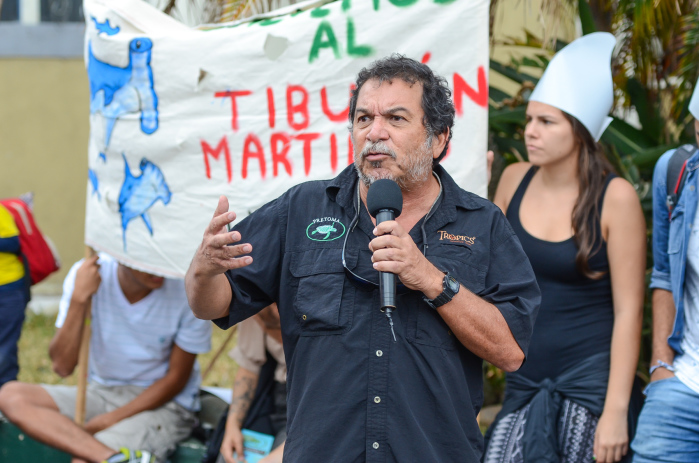
In reaction to the mounting scandal, President Solís posted on his Facebook page that, “There was no shark finning,” meaning the sharks weren’t killed solely for their fins.
But how do administration officials know that?
One way is to take INCOPESCA at its word. Another is by checking inspection logs for ships that unloaded hammerhead fins for export. INCOPESCA is tasked with keeping the logs and submitting them with export permit requests.
The Tico Times obtained the logs, known by their Spanish acronym FIADs, for the Dec. 24 shipment. They show several ships unloading different quantities of hammerhead shark fins on dates ranging from May to October, 2014. At least four of the boats left port after the inclusion of hammerheads on the CITES Appendix II list in September.
The total weight of the fins on the FIADs adds up to 411 kg. But factoring in the 60 percent weight loss for fins from the moment they are landed to when they’re dried, INCOPESCA would have needed to provide FIADs for about 1,000 kg of fresh shark fins – the equivalent of 1,000 adult sharks, according to Pretoma. (The number of sharks increases if juveniles are factored into the estimation.) That, say conservationists, is no longer a “moderate” number.
“They were sloppy,” said Arauz, referring to INCOPESCA’s handling of the FIADs.
A second export permit
Perhaps that’s why when exporters applied for a second permit, this time for 1,200 kg of hammerhead shark fins, the CITES scientific council CRAC-CITES balked, rejecting the request. But on Feb. 16, Jurado – who has a track record of opposing shark finning – signed a resolution overruling CRAC-CITES and siding with INCOPESCA to grant an export permit to the company Smalley Development S.A. The same resolution noted that no further export permits would be issued until Costa Rica develops and implements its NDF criteria.
Not all of the 1,200 kg allowed by the permit have been exported, Jurado told The Tico Times. But the actual amount that’s been exported is debated by conservationists.
According to Arauz, the second export totaled about 490 kg. Jurado said the number was lower, about 249 kg. (The Tico Times was unable to obtain all of the FIADs for the second export permit.)
Either way, that leaves open the possibility for hundreds more kilograms of shark fins to be exported under the same permit, Arauz believes.
Adding up the two export permits – and factoring in weight loss – Costa Rica exported fins from between 1,500 and 2,000 threatened hammerhead sharks after the September 2014 deadline. Arauz said that’s a clear violation of CITES.
Even if those sharks were caught unintentionally, as officials claim, a process known as bycatch, CITES mentions bycatch as one of the top threats to hammerhead shark populations worldwide. That’s why countries should have science-based NDFs in place before they’re allowed to export fins from these species, CITES notes.

According to the U.S. National Oceanic and Atmospheric Administration (NOAA), scalloped hammerheads (Sphyrna lewini), one of the species exported from Costa Rica, are “highly desired for the shark fin trade because of [their] fin size and high fin ray count.”
Scalloped hammerhead fins can fetch up to $110 per kilogram for exporters, NOAA added. The top two threats to the species, the agency noted, are “targeted fisheries, shark fin trade,” and “bycatch.”
Despite government assurances that the exported fins came from bycatch, conservationists question whether the exported fins were legally fished. On March 11, the Costa Rican Federation for Environmental Conservation, or FECON, released documents indicating some of the sharks whose fins were exported “could have been illegally fished in Cocos Island National Park.” One fishing boat that sold fins for export, El Marisol, was spotted by Cocos Island park rangers on Sept. 24, 2014, according to documents provided by FECON.
An INCOPESCA FIAD shows that on Sept. 29, 2014, El Marisol unloaded at least 1.4 kg of hammerhead fins, and the ship is listed by Inversiones Cruz Z, S.A. as one of the providers of fins for export, according to the same documents.
Twelve other boats that sold hammerhead fins for export, FECON claims, have been spotted in Cocos Island without authorization in the last three years, which is a crime. Those ships continue to receive fuel subsidies from INCOPESCA via Costa Rican taxpayers, FECON added.
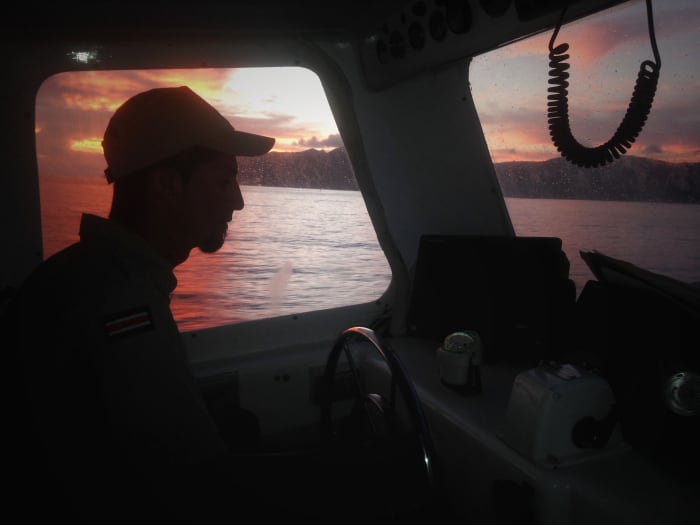
Protests
News of the Solís administration’s actions spread quickly on social networks and in local media, handing it its first full-blown environmental scandal. Groups as diverse as the National Tourism Chamber and the youth wing of the ruling Citizen Action Party voiced their outrage over the affair. The Oceanography Institute of Costa Rica filed a formal complaint with the Comptroller General’s Office. Student and environmental groups collected thousands of signatures, and ex-President José María Figueres (1994-1998) – who has rebranded himself as an environmental advocate and who some speculate will make another run for the presidency in 2018 – took to Twitter to demand President Solís “correct the decision by INCOPESCA and SINAC.”
Sr Presidente @luisguillermosr Por favor corrija la decisión de INCOPESCA y SINAC, que autoriza aleteo d tiburón martillo. Esto afecta a CR.
— José María Figueres (@figuerescr) February 27, 2015
Last Thursday, protesters outside the Environment Ministry called for the heads of Environment Minister Edgar Gutiérrez and SINAC’s Jurado. Then they marched to the Legislative Assembly, where members of the Environmental Commission already had agreed to investigate the export resolution.
In one of several fiery speeches that day, FECON’s Osvaldo Durán bitterly observed that the February resolution was signed on the same day as the funeral of Álvaro Ugalde, a hero in Costa Rica’s conservation movement and one of the godfathers of the national park system.
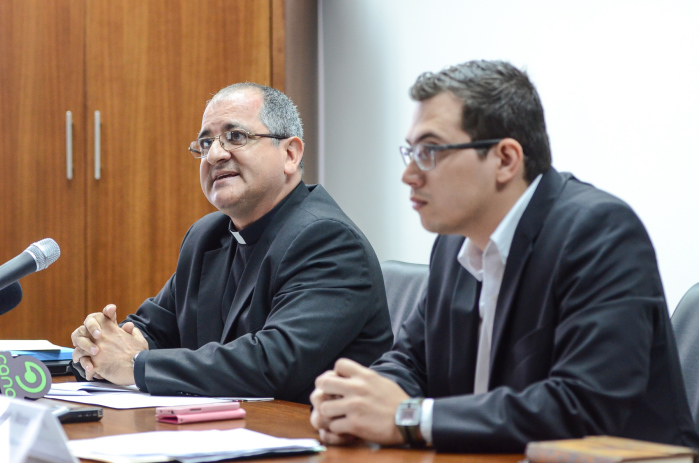
A government plan backfires
Last Thursday’s protest ended up overshadowing a press conference held by the administration to unveil a new national policy and presidential directive on shrimp fisheries, which it claimed would create jobs and fight coastal poverty. The conference was led by INCOPESCA President Gustavo Meneses, a priest with no background in marine resource management and no prior service in public office, and Oceans, Coasts and Wetlands Vice Minister Fernando Mora, a 28-year-old geographer who also has no previous political experience.
The conference showcased the crux of the Solís administration’s approach to marine management: Coastal areas are poor, the oceans are being depleted, and Costa Rica must create jobs for struggling fishermen and their families. But even the shrimp fisheries plan received harsh criticism – from small-scale fishermen and conservation groups alike.
The plan “isn’t going to reduce poverty,” Jorge Jiménez, general director of the marine conservation organization Fundación MarViva, told The Tico Times. “It’s going to increase it.”
Poverty-reduction is also a poor excuse for enabling the shark fin trade, where exporters earn up to four times the amount fishermen are paid for fins.
All of these setbacks leave the impression that despite the administration’s talking points, current marine management efforts are promoting the interests of the large-scale fishing industry, a belief that has for many years led to calls for reforming INCOPESCA. Despite the efforts of INCOPESCA’s Meneses at fostering dialogue and compromise between the competing interest groups involved in local marine issues, conservationists and artisanal fishermen believe they’re getting the short end of the stick.
For the optimistic, the administration still has more than three years to adjust its course, and maybe the fin fiasco will be a wake-up call.





